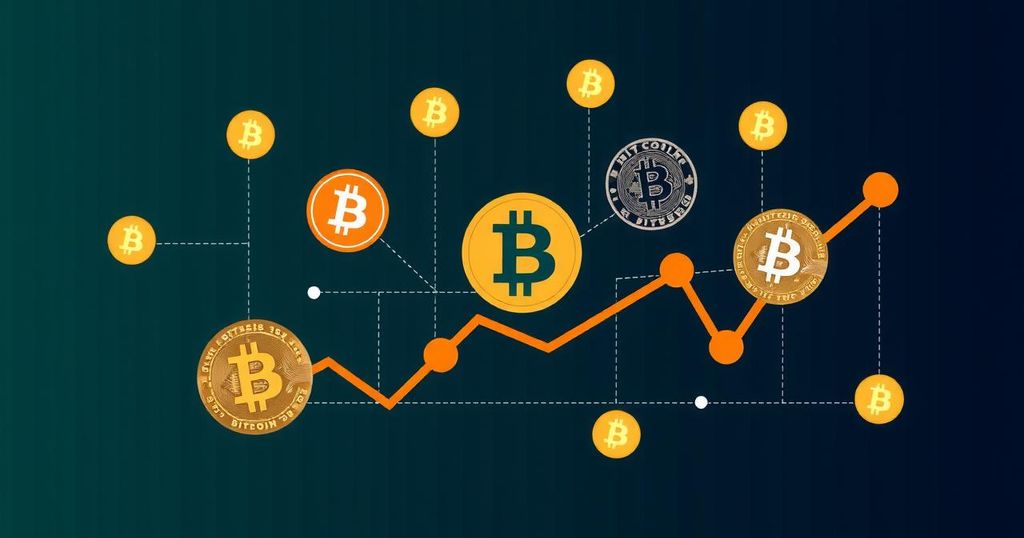Understanding the Dynamics of Bitcoin Price Fluctuations
Understanding the Dynamics of Bitcoin Price Fluctuations
Bitcoin’s frequent price fluctuations can be concerning, particularly for those new to cryptocurrency investment. However, these dips are not necessarily a cause for alarm but rather a normal aspect of market behavior. By examining various factors that contribute to these changes—including market psychology, regulatory developments, and technological challenges—investors can better navigate the turbulent crypto landscape. This analysis aims to elucidate why such price dips are typically anticipated in the inherently volatile domain of Bitcoin.
Impact of Regulatory Developments and Government Policies
Regulatory updates frequently instigate significant reactions within the Bitcoin market. When governments worldwide engage in discussions surrounding cryptocurrency regulations, taxation, or limitations, the market often responds rapidly. These market responses stem not solely from the regulatory content but also from the broader interpretations thereof. Policies that are perceived to endorse the legitimacy of Bitcoin may encourage investor confidence, whereas those seen as threatening to its decentralized nature can lead to market instability.
For instance, the announcement of stringent regulatory measures against Bitcoin mining by China led to a steep decline in prices, as investors speculated that similar actions could be adopted by other nations, creating widespread uncertainty. Conversely, when nations such as El Salvador recognize Bitcoin as legal tender, the market reaction is mixed, characterized by excitement and skepticism regarding the potential implications of such decisions. Thus, staying attuned to regulatory news is vital, as it provides insight into possible market movements. Investors must consider whether regulatory announcements should prompt panic selling or if they could present strategic buying opportunities.
To mitigate risks, it is advisable to maintain composure and conduct independent research. Seeking guidance from financial professionals who possess expertise in both cryptocurrency and traditional finance can offer clarity in navigating these complexities.
Influence of Market Manipulation and Major Investors
The Bitcoin market, reminiscent of a limited ecosystem, is heavily influenced by a handful of substantial stakeholders known as “whales.” These individuals or entities command considerable volumes of Bitcoin, and their trading activities—be they acquisitions or liquidations—can substantially impact market prices. Instances of sudden price downturns without apparent triggers may frequently be attributed to the actions of these large investors.
Furthermore, market manipulation remains a serious concern, where coordinated efforts by groups of investors can artificially inflate or deflate prices. For example, a strategic sell-off by several significant holders in 2021 provoked sharp declines, triggering turmoil among smaller investors. To combat such occurrences, investors are encouraged to monitor Bitcoin wallets associated with large holdings. Numerous tracking tools are available that can provide insights into whale activities, substantially aiding in anticipating potential market shifts.
Though the influence of whales and manipulative practices can be disconcerting, it is crucial to remember that they do not monopolize market control. Staying informed and resisting the temptation to make hasty decisions driven by fear are imperative for navigating these turbulent market conditions.
Technological Innovations and Security Issues
Bitcoin’s foundation lies in cutting-edge technology, which is perpetually evolving. However, the advancements bring along new threats. Innovations such as network upgrades and the integration of Bitcoin on emerging platforms can significantly sway its market price. For example, the introduction of the Lightning Network was met with enthusiasm due to its promise of expedited transactions and reduced fees, initially resulting in a price surge.
Conversely, technological advancements may pose vulnerabilities. The catastrophic security breach of Mt. Gox in 2014, resulting in the loss of 850,000 Bitcoins, exemplifies how breaches can erode trust and result in dramatic price declines. Understanding this duality of opportunity and risk is vital. Investors should stay abreast of technological developments and their potential ramifications while conducting thorough research before committing to new innovations, ensuring they are informed of the implications of emerging technologies on Bitcoin.
Conclusion
Though Bitcoin price dips can provoke apprehension, they are often an inherent part of the cryptocurrency’s lifecycle. Rather than succumbing to panic, discerning investors recognize these instances as potential opportunities. Remaining informed and grasping the underlying factors contributing to such price movements can transform volatility from a source of anxiety into a strategic tool. Therefore, the next time Bitcoin experiences a significant price decline, it is essential to bear in mind that this is merely a chapter in the ongoing narrative of an ever-evolving asset.
Disclaimer:
This content serves as promotional marketing material and should not be interpreted as financial advice. Conduct thorough research and consider potential risks before utilizing any trading platform or service.






Post Comment